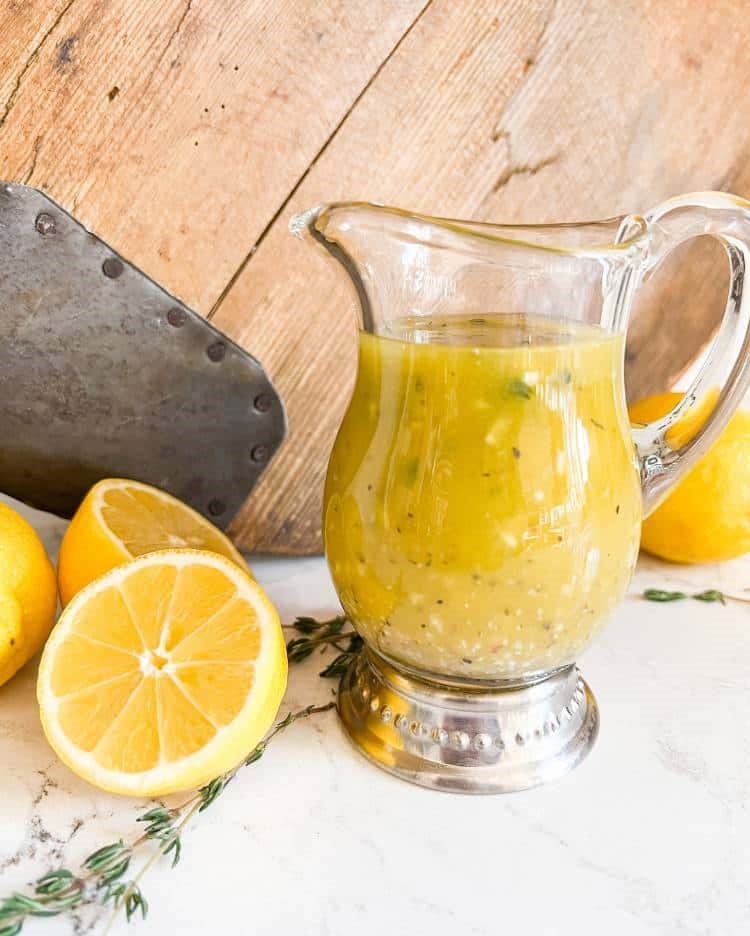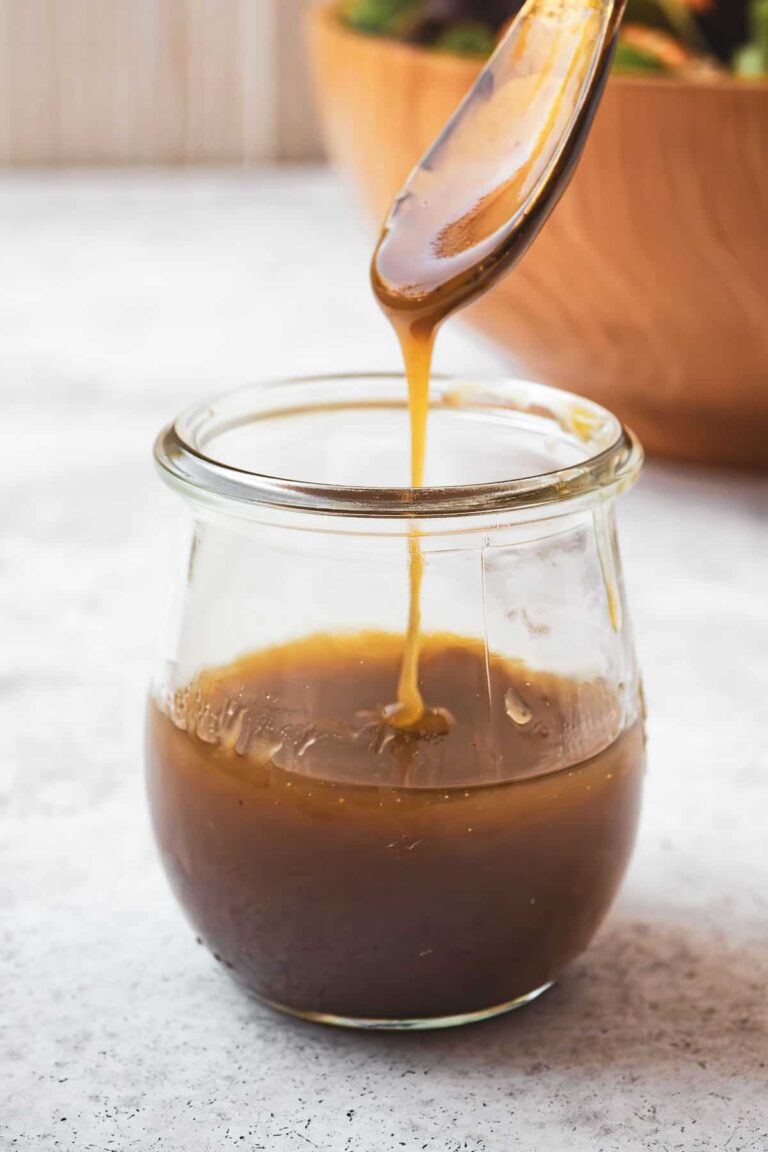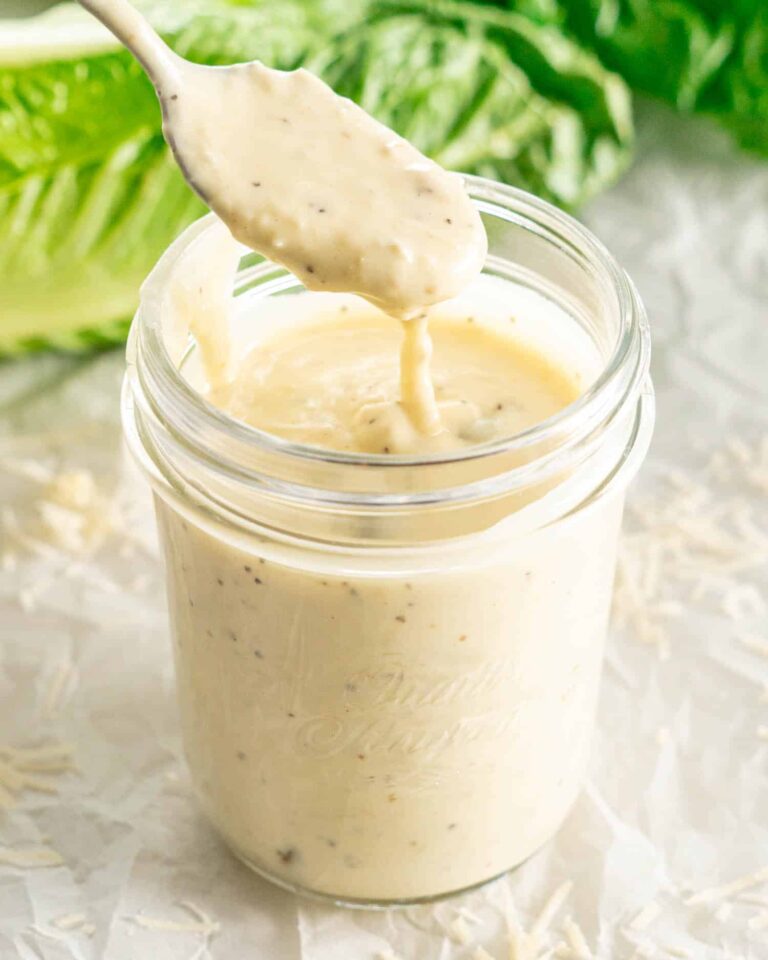Lemon vinaigrette dressing is a refreshing and tangy addition to any meal, offering a burst of citrusy flavor that can elevate the simplest dishes. Whether you’re drizzling it over a fresh salad, using it as a marinade, or pairing it with roasted vegetables, this versatile dressing has become a favorite among home cooks and professional chefs alike. In this article, we will dive deeper into the world of lemon vinaigrette dressing, including its ingredients, preparation methods, variations, and creative ways to use it in your kitchen.
What Is Lemon Vinaigrette Dressing?
Lemon vinaigrette is a type of salad dressing that combines fresh lemon juice with olive oil to create a light, tangy, and refreshing dressing. The dressing typically includes a balance of acidic and fatty components, with lemon juice providing the tartness and olive oil giving it a smooth, rich texture.
Dijon mustard, honey, garlic, and seasonings like salt and pepper are often added to enhance the flavor and help emulsify the dressing, ensuring it doesn’t separate. This dressing is an excellent option for those looking for a lighter, yet flavorful alternative to creamy dressings that can be high in calories.
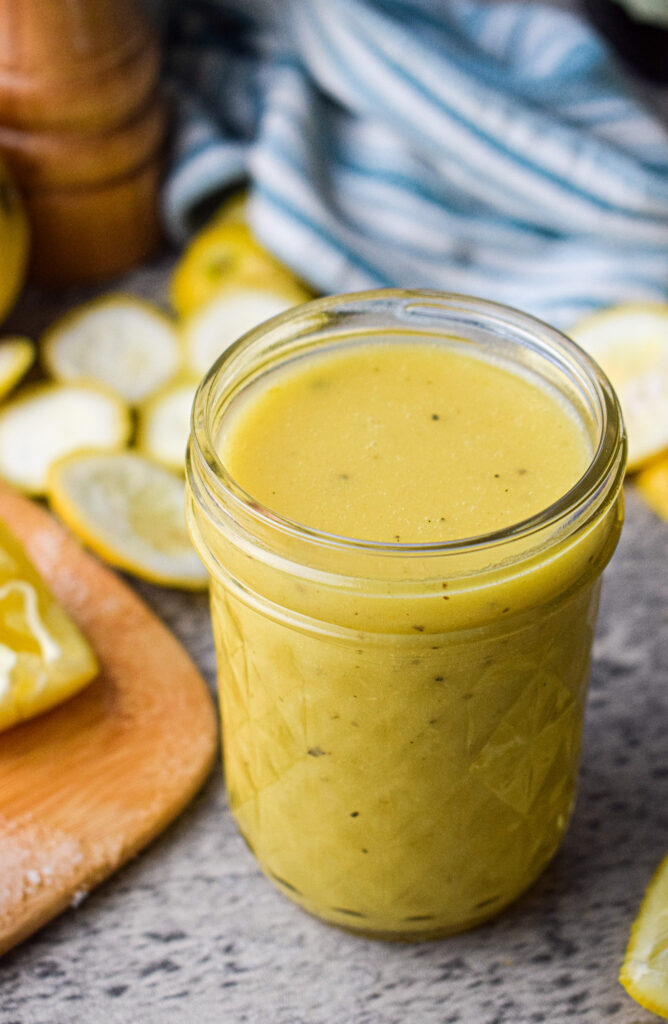
Key Ingredients of Lemon Vinaigrette
To make the perfect lemon vinaigrette, you’ll need a few essential ingredients. Each component contributes to the overall flavor, texture, and consistency of the dressing. Let’s explore them in detail:
- Fresh Lemon Juice:
Lemon juice is the foundation of this vinaigrette. It offers a tangy, acidic base that cuts through the richness of the olive oil. Freshly squeezed lemon juice provides a much brighter and more vibrant flavor than bottled lemon juice, which may contain preservatives and additives. Ideally, use ripe, juicy lemons for the best results. - Olive Oil:
Olive oil is the primary fat in the dressing, adding richness and smoothness to balance the acidity of the lemon. Extra virgin olive oil is typically preferred because it has a superior taste and is packed with healthy monounsaturated fats. The high-quality oil also brings a fruity and slightly peppery note that complements the lemon’s sharpness. - Dijon Mustard:
Dijon mustard is an essential ingredient in lemon vinaigrette because it serves as an emulsifier, helping to bind the oil and lemon juice together. Mustard also adds a subtle tangy flavor that enhances the overall depth of the dressing. - Garlic:
Minced or grated garlic is often added to vinaigrettes for its aromatic and savory qualities. Garlic can infuse the dressing with a fragrant kick, making it more flavorful and complex. - Honey or Maple Syrup:
A small amount of honey or maple syrup balances the tartness of the lemon juice. This touch of sweetness creates a harmonious flavor profile and prevents the dressing from becoming too sharp. It also helps to round out the dressing and make it more enjoyable. - Salt and Pepper:
Salt enhances all the other flavors in the vinaigrette, while freshly ground black pepper provides a bit of heat and an extra layer of flavor. - Optional Fresh or Dried Herbs:
Fresh or dried herbs like basil, thyme, oregano, or parsley can be added to create a more aromatic, herb-infused vinaigrette. Herbs give the dressing additional layers of flavor and make it more versatile when paired with various dishes.
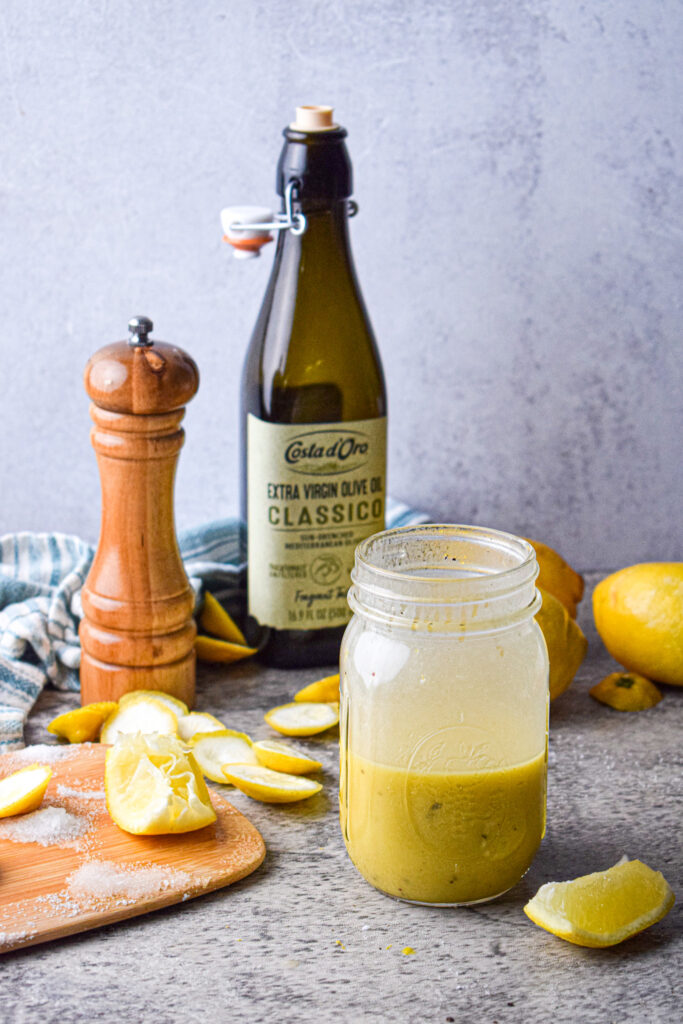
How to Make Lemon Vinaigrette Dressing: Step-by-Step
Making lemon vinaigrette at home is incredibly simple and requires only a few basic steps. By following these instructions, you can create a flavorful, homemade dressing in just a few minutes.
Step 1: Prepare Your Ingredients
Start by gathering all the ingredients. Fresh lemon juice is essential, so squeeze the juice of one or two lemons (depending on how much dressing you want to make) and strain it to remove seeds. You can also mince the garlic or use a garlic press to ensure it is finely grated. If you plan to add honey or maple syrup, measure out a teaspoon or so.
Step 2: Combine the Base Ingredients
In a small mixing bowl, combine the freshly squeezed lemon juice, Dijon mustard, honey (or maple syrup), and minced garlic. Whisk the ingredients together to combine them into a smooth mixture. This creates the acidic base of your dressing with just the right amount of sweetness and tang.
Step 3: Emulsify the Dressing
While whisking the mixture, slowly drizzle in the olive oil in a steady stream. This gradual addition allows the oil to emulsify with the other ingredients, creating a smooth, homogenous dressing. If you want a thicker consistency, you can increase the amount of mustard or use a little more honey.
Step 4: Season to Taste
Once the dressing is emulsified, season with salt and freshly ground black pepper to taste. The salt helps to enhance all of the flavors, while the pepper adds an extra layer of spice.
Step 5: Add Optional Herbs
If you want to add a herbaceous element to the dressing, now is the time to add fresh or dried herbs. For example, finely chopped fresh parsley, basil, or thyme can add complexity and aroma to your lemon vinaigrette.
Step 6: Taste and Adjust
Before serving, taste the vinaigrette. If you find it too tart, add a little more honey or olive oil to balance it out. If it’s too sweet, add a little more lemon juice. The beauty of making your own vinaigrette is that you can easily adjust the flavor to your liking.
Step 7: Store or Serve
Lemon vinaigrette can be used immediately or stored for later use. Pour it into a jar with a tight-fitting lid, and refrigerate for up to a week. Make sure to shake or stir it before use, as the oil and lemon juice may separate over time.
Creative Variations of Lemon Vinaigrette Dressing
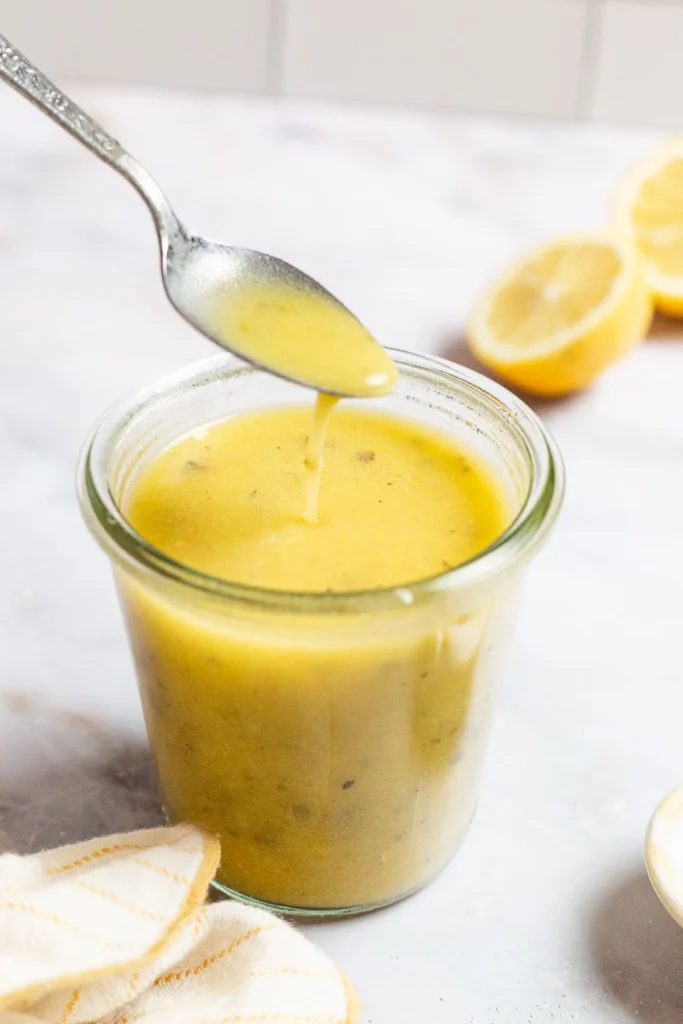

While the classic lemon vinaigrette recipe is delicious on its own, there are many ways to customize it to suit your preferences and enhance its versatility in the kitchen. Here are a few variations to try:
- Herb-Infused Lemon Vinaigrette
Add fresh herbs like parsley, basil, dill, or thyme to infuse the vinaigrette with aromatic flavors. You can also use a mix of dried herbs such as Italian seasoning or oregano. The herbs can be finely chopped or added whole for a more rustic style. - Spicy Lemon Vinaigrette
For a kick of heat, incorporate a pinch of red pepper flakes or a few dashes of hot sauce into the dressing. This variation works well when pairing the vinaigrette with grilled meats or spicy salads. - Creamy Lemon Vinaigrette
If you prefer a creamier dressing, blend in a tablespoon of Greek yogurt, sour cream, or mayonnaise. This adds richness and a velvety texture that makes the vinaigrette even more indulgent. - Citrus Lemon Vinaigrette
Try mixing lemon juice with other citrus juices like orange or lime for a multi-layered citrus profile. This variation is great for tropical salads or seafood dishes.
How to Use Lemon Vinaigrette Dressing
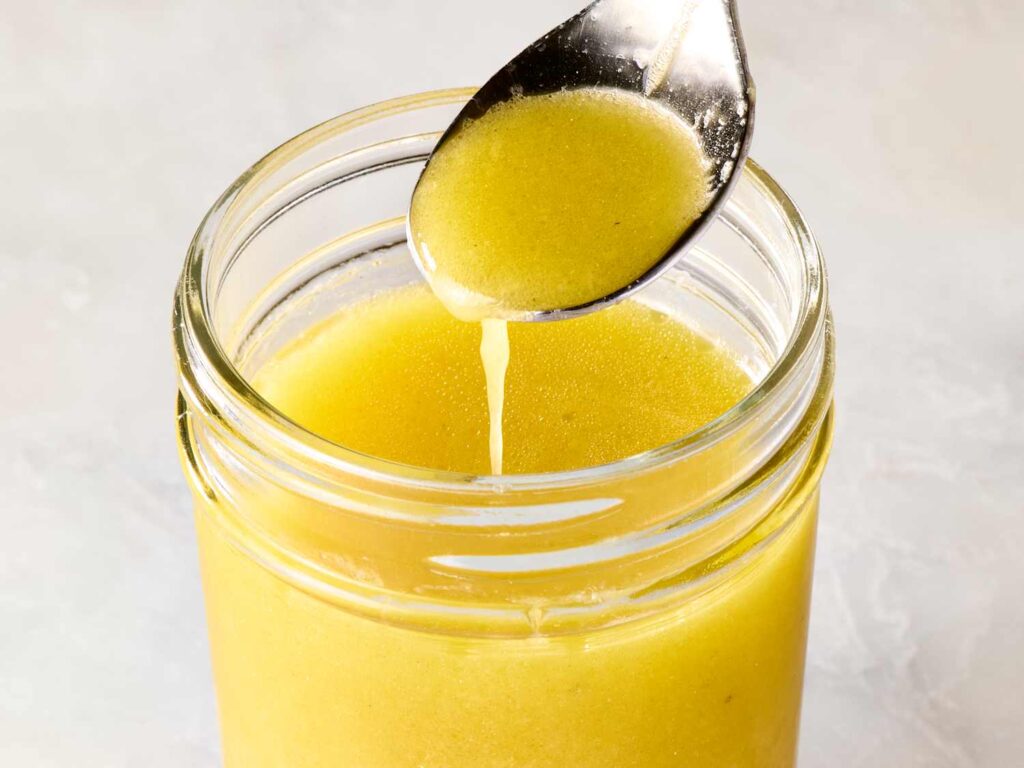
Lemon vinaigrette dressing is incredibly versatile and can be used in various ways:
- Salads
- Drizzle over fresh greens like arugula, spinach, or mixed lettuce. It works especially well with salads containing fresh vegetables, nuts, or cheese.
- Use it as a dressing for grain-based salads such as quinoa, couscous, or farro, adding a light and refreshing element.
- Marinades
- Lemon vinaigrette makes a fantastic marinade for meats like chicken, pork, or fish. The acidity from the lemon helps to tenderize the meat while infusing it with flavor. Try it with grilled chicken or shrimp for a bright, tangy taste.
- Vegetables
- Drizzle it over roasted or grilled vegetables like zucchini, asparagus, or Brussels sprouts. The acidity of the dressing balances the savory, caramelized flavors of the roasted veggies.
- Grain Bowls
- Pour lemon vinaigrette over a grain bowl with quinoa, rice, roasted vegetables, and protein sources like chicken or tofu for a quick, nutritious meal.
- Bread Dip
- Serve it as a dipping sauce for fresh crusty bread or pita. This light yet flavorful dressing makes a great addition to a Mediterranean-style appetizer spread.
Health Benefits of Lemon Vinaigrette
Lemon vinaigrette is a healthy dressing option for several reasons. Olive oil, the primary fat in the dressing, is rich in heart-healthy monounsaturated fats and antioxidants. It can help reduce inflammation, improve cholesterol levels, and promote cardiovascular health. Lemons are an excellent source of vitamin C, which supports immune function and skin health. Moreover, the dressing contains no added preservatives, artificial sugars, or unhealthy fats, making it a far healthier choice than most commercial salad dressings.
Also Try: Healthy Homemade Caesar Salad Dressing Recipe
Conclusion
Lemon vinaigrette dressing is a simple yet flavorful condiment that can transform your meals. With just a few basic ingredients and minimal preparation, you can create a fresh, tangy dressing that pairs well with almost anything. Whether used for salads, marinating meats, or enhancing vegetables, lemon vinaigrette is the perfect addition to your kitchen repertoire. Experiment with different variations and make it your own—your taste buds will thank you!
FAQs About Lemon Vinaigrette Dressing
1. Can I use lemon vinaigrette as a marinade for meat?
Yes, lemon vinaigrette works beautifully as a marinade for chicken, fish, pork, and tofu. The acidity helps to tenderize and flavor the meat.
2. How long does lemon vinaigrette last in the fridge?
Lemon vinaigrette can be stored in an airtight container in the fridge for up to one week.
3. Can I use other oils besides olive oil?
Yes, you can use other oils such as avocado oil or grape seed oil, but olive oil is preferred for its flavor and health benefits.
4. Is lemon vinaigrette gluten-free?
Yes, lemon vinaigrette is naturally gluten-free, as long as no gluten-containing ingredients like soy sauce are added.
5. Can I make lemon vinaigrette ahead of time?
Yes, you can make lemon vinaigrette ahead of time and store it in the fridge for later use. Be sure to shake or whisk it before serving as the ingredients may separate.

